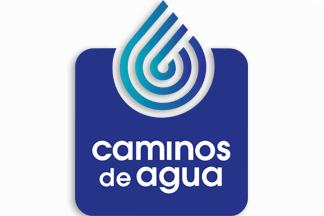Household Water Treatment Options [] Caminos de Agua
News Category: News and Community News
-
Published August 25, 2021
By Dylan Terrell
Quality of Your Water
Water quality is not static. It varies throughout the region and also continues to change over time. Additionally, especially in urban areas like San Miguel de Allende, water quality in a given location can change much quicker than normal, sometimes even in a matter of days. This is because the local water authorities often mix waters from different wells in order to meet the population’s water demand. Because of this, we recommend always treating arsenic and fluoride in your water even if levels of those contaminants seem okay in your home today.
At Caminos de Agua, we consistently sample water in order to understand these changes in quality and to track trends over time. We publish all of our water quality results in both rural and urban locations on our Water Quality Map available on our web page.
Solutions You Can Use
It’s important to understand that most of the commercially available water treatment systems do not remove arsenic and fluoride. The majority of these systems are designed to remove biological pathogens and improve taste, but very few are capable of removing chemical contaminants like arsenic and fluoride. Popular options like “whole-house” water treatment systems (a combination of UV, sediment, and carbon), boiling water, adding chlorine, and even expensive Nikken filters, simply can’t touch arsenic and fluoride which are completely dissolved in the water.
At Caminos de Agua, we promote three possible solutions:
Rainwater Harvesting Systems + Biological Treatment
We believe that harvesting, storing, and treating rainwater to remove biological pathogens is the most environmentally-friendly solution; however, all three options should give you consistent access to clean drinking water, free of arsenic and fluoride. Learn more about rainwater harvesting on our web page.
Reverse Osmosis Systems
The only commercially-available treatment system in our region capable of removing arsenic and fluoride is a Reverse Osmosis (RO) treatment system. These systems can be installed in a couple of hours by a plumber and require maintenance every 3-6 months. Please note that there are many systems that “look” like reverse osmosis but in fact are not. Ultrafiltration is NOT reverse osmosis. If you have any doubts please contact us through our website with a picture of your system. If you already have an RO system Caminos offers a quick efficiency test that tells you how well your system is working.
Bottled Water
We have tested many brands of commercial bottled water in our region and have never found any significant levels of arsenic, fluoride, or other contaminants. That said, numerous other studies have shown excessive levels of arsenic, fluoride, biological, and other contaminants in bottled water all throughout Mexico. In the future, as resources allow, we plan on offering more information on local bottled-water companies and options. In the meantime please be careful and only buy bottled water from reputable distributors.
Learn more and read past issues of La Gota at: www.caminosdeagua.org/en/la-gota

Caminos de Agua is a community focused, data-driven, and science-oriented non-governmental organization (NGO) based in San Miguel de Allende. We drive to empower local at-risk communities to obtain adequate supplies of safe and healthy drinking water. Today, Caminos de Agua is a team of ten full- and part-time employees, plus several graduate-level engineering and public interest interns from Engineers Without Borders UK and other universities and institutions. We’re a mix of expat residents and Mexicans, technologists and community organizers, researchers and educators, united by our concern for public health and welfare. Caminos de Agua is organized as a registered nonprofit in both the U.S. and Mexico. At Caminos de Agua, we believe that access to safe, healthy drinking water should be a fundamental human right. We help communities at risk confront challenges of water quality and scarcity through:
1. Water monitoring 2. Education 3. Community-led solutions 4. Research and development 5. Activism


Leave a Reply